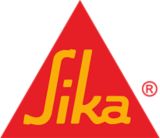
Sikaflex®-211 SW
Polyurethane sealant capable of application by swirl spray
Sikaflex®-211 SW is a 1-component polyurethane sealant whose thixotropy makes it suitable for application by means of a swirl spray while maintaining good sag and slump characteristics. It bonds well to a wide variety of substrates and is suitable for making permenant elastic seals.
- Capable of application by swirl spray
- Good gap bridging and sag characteristics even after shearing
- Bonds to a wide variety of substrates, often without the need for special pre-treatment
- Can be sanded and painted
- Short cut-off string

